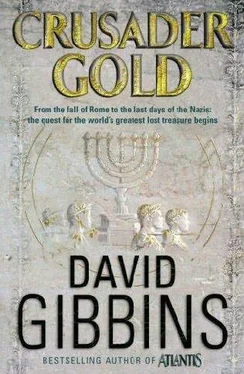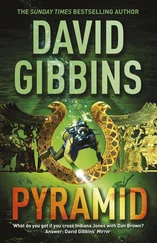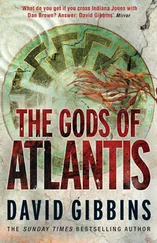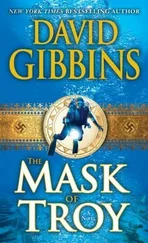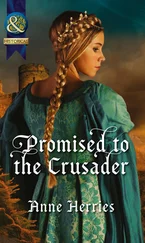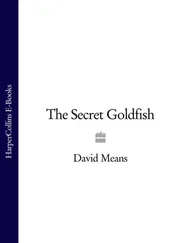David Gibbins - The Crusader's gold
Здесь есть возможность читать онлайн «David Gibbins - The Crusader's gold» весь текст электронной книги совершенно бесплатно (целиком полную версию без сокращений). В некоторых случаях можно слушать аудио, скачать через торрент в формате fb2 и присутствует краткое содержание. Жанр: Прочие приключения, на английском языке. Описание произведения, (предисловие) а так же отзывы посетителей доступны на портале библиотеки ЛибКат.
- Название:The Crusader's gold
- Автор:
- Жанр:
- Год:неизвестен
- ISBN:нет данных
- Рейтинг книги:3 / 5. Голосов: 1
-
Избранное:Добавить в избранное
- Отзывы:
-
Ваша оценка:
- 60
- 1
- 2
- 3
- 4
- 5
The Crusader's gold: краткое содержание, описание и аннотация
Предлагаем к чтению аннотацию, описание, краткое содержание или предисловие (зависит от того, что написал сам автор книги «The Crusader's gold»). Если вы не нашли необходимую информацию о книге — напишите в комментариях, мы постараемся отыскать её.
The Crusader's gold — читать онлайн бесплатно полную книгу (весь текст) целиком
Ниже представлен текст книги, разбитый по страницам. Система сохранения места последней прочитанной страницы, позволяет с удобством читать онлайн бесплатно книгу «The Crusader's gold», без необходимости каждый раз заново искать на чём Вы остановились. Поставьте закладку, и сможете в любой момент перейти на страницу, на которой закончили чтение.
Интервал:
Закладка:
“And one might be the menorah,” Jack added quietly.
“The more I’ve seen it, the more I believe the menorah became Harald’s own rune, not only a symbol of his prowess and achievement but also a kind of talisman, something wrapped up in his own destiny.”
“His survival at Stamford Bridge would have seemed little short of a miracle,” Jack said. “As a Viking warrior Harald would have hoped for glorious death in battle, but the fact that he was spared may have suggested that an even greater battle awaited him. In their half-crazed state he and his men may already have crossed the boundary into the spirit world, and believed they were seeing portents of their own destiny at the final showdown of Ragnarok.”
“Remember what Father O’Connor said,” Jeremy added. “The Norse believed in predestination, that one’s fate is fixed at birth. Maybe Harald felt his was still to come, and was being driven onwards. He still needed to find the greatest triumph for his character, to die a death befitting the supreme image of the Norse hero.”
“Okay, guys, you’ve lost me,” Costas said. “All I want to know is where he went from here.”
Jack nodded and looked serious. “Well, one thing they would have been able to do here was replenish their water and food and carry out ship repair. One of the first things the archaeologists found in the 1960s was a primitive smithy where local bog iron was smelted and made into rivets. And some of those wood chips found near the foreshore could have come from Harald’s men making replacement hull timbers.”
“And then where? East or south?”
“West down the St. Lawrence estuary would have been a tough haul against the river flow,” Jeremy said. “And going any farther in that direction they would have been terrified of reaching the edge of the world and plunging into Ginnungagap, the great abyss.”
“Not exactly the glorious end they had in mind,” Costas said. “So we’re talking south?”
Jack nodded, then turned round and squatted with his back to the rock while he took out a palm computer from his backpack. He looked up at Jeremy. “It’s my turn to apologise for concealing something. I’m already one step ahead.” He flipped open the screen and activated the computer, and Costas and Jeremy squatted on either side of him. After a few seconds the isometric image of a Viking longship appeared on the screen.
“Lanowski emailed this to me late yesterday evening, after you were both asleep,” Jack said. “It’s a 3-D image of our Viking longship in the ice, based on the photogrammetric data we acquired inside the berg. Assuming that the Wolf and the Eagle were sister ships, this gives a pretty good idea of what the vessel looked like that brought Harald and his men to Vinland.”
Jack scrolled around the image to give them different isometric views, then zoomed in to reveal details. They saw an elegant vessel with a single mast and square sail, broad-beamed amidships, with the stem and stern rising symmetrically. They could see where each strake of the hull had been made up of several planks, the lower edge of each overlapping the outside of the one below and joined to it by rivets and clenched nails. The keel was deep, with steeply angled lower planks, giving the vessel good resistance to sideways drift. Below the gunwale were evenly spaced oarports, and at the stern a steering oar on a projecting boss, just as Jack and Costas had seen on the longship in the ice. Lanowski had left out the superb carving that had adorned the stem-post, but flying from the stern was a white flag which on close inspection proved to contain the distinctive IMU logo and a spidery image of a seven-branched candlestick.
“My God,” Costas murmured. “The guy’s got a sense of humour after all.”
“After overwintering at the icefjord they would have needed to refit their ship for the voyage south,” Jack said. “Remember she was a venerable vessel by Viking standards, the same ship Harald had used to escape from the Golden Horn twenty-five years before. They would have had their work cut out for them making her seaworthy again after having survived the trip from Iona and then being laid up on the ice all winter.”
“What time of year are we talking about?”
“The palaeoclimatologists in Macleod’s team have got pretty excited about the ice cores they took through the berg where the longship was trapped. Apparently the winter of 1066 to 1067 in Greenland was particularly harsh, presaging the Little Ice Age of the medieval period. It would have been May or even early June before the Davis Strait was clear of drift ice.”
“Once they’d decided to consolidate in one ship, the Eagle, they could have used timbers from the other vessel to make repairs,” Costas said.
“Exactly what Lanowski found when he studied the pictures,” Jack said. “Cross-beams and even part of the keel had been removed from the stern area.”
“What about caulking material?”
“They could only have survived the winter by hunting and fishing on the ice,” Jack said. “I’m convinced they had Greenland Norse with them, men they had taken on board at the western settlement of Greenland to act as guides. They would have shown Harald’s men how to smear the timbers with seal blubber as protection against shipworms and to make rope from walrus hide.”
“And they would have told them there was no hope in going north,” Costas suggested.
“In theory, the Vikings could have navigated the Northwest Passage through the Arctic to the Bering Strait, but there’s no evidence they ever went west of Baffin Bay,” Jeremy replied. “There’s a smattering of Norse artefacts from Inuit sites as far north as Ellesmere Island, on the edge of the polar ice cap, but they were probably collected by Inuit hunters from shipwrecks or from abandoned Norse settlements in Greenland. It’s like the evidence for Franklin’s doomed expedition to find the Northwest Passage in 1845, a tantalizing scatter of finds absorbed into another culture.”
“It’s kind of spooky,” Costas murmured. “Everywhere we go we seem to be on the trail of the Vikings, yet it’s as if they weren’t quite there. I think I’m beginning to believe in that spirit world.”
Jack jerked his head back towards the low shoreline behind them and the site of L’Anse aux Meadows. In his mind’s eye he saw the Viking ship, sail furled, drawn up and keeled over in the shallow tidal estuary. “You can be sure they were here. And remember our longship in the ice.”
“So we agree they reached here in, say, late June of 1067?” Jeremy asked.
“Once the drift ice had gone and the weather had settled, it would have been a relatively easy passage across the Davis Strait from Ilulissat and down the coast of Baffin Island and Labrador to this place, following the route told to them by the Greenlanders,” Jack said. “It’s iceberg alley out there, but they could have mustered enough fit oarsmen for short bursts to keep out of harm’s way. Chances are they had a steady and favourable wind all the way, behind them or on the quarter. Even in rough seas a vessel like this would have been able to ride out storms, supple enough to flex with the pitch of the sea, and with a high enough freeboard to prevent the hull sinking under the weight of icing. And the Norse were extraordinarily skilled navigators. They had a kind of sunstone, a refractive feldspar which would catch polarized light in overcast weather and tell them where the sun was, but mostly they navigated by their senses, by an intimate knowledge of the sea and stars. If Harald ever got caught in one of the perennial fogs of this coast, they would have kept on course by the smell of the land, the waft of the pine forests.”
“And you really think Vinland was their promised land?” Costas persisted, looking dubiously towards the shore again. “It looks pretty bleak and forbidding to me.”
Читать дальшеИнтервал:
Закладка:
Похожие книги на «The Crusader's gold»
Представляем Вашему вниманию похожие книги на «The Crusader's gold» списком для выбора. Мы отобрали схожую по названию и смыслу литературу в надежде предоставить читателям больше вариантов отыскать новые, интересные, ещё непрочитанные произведения.
Обсуждение, отзывы о книге «The Crusader's gold» и просто собственные мнения читателей. Оставьте ваши комментарии, напишите, что Вы думаете о произведении, его смысле или главных героях. Укажите что конкретно понравилось, а что нет, и почему Вы так считаете.
